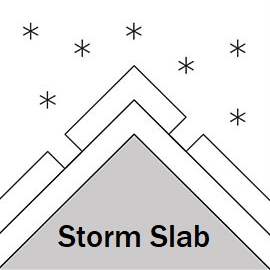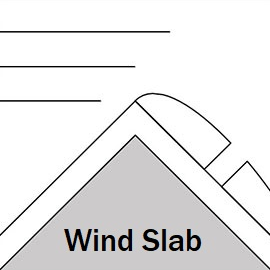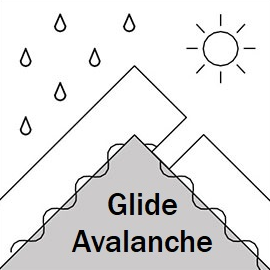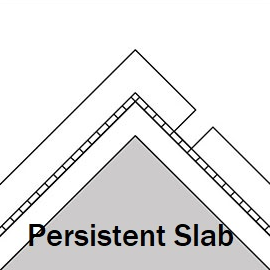Gudauri
Natural avalanches are possible, human-triggered avalanches are likely. Small avalanches in many areas, or large avalanches in specific areas, or very large avalanches in isolated areas.
Old stubborn windslabs, new storm snow and new windslabs are what to watch out for in the next 2 days. Glide slabs are also becoming more of a problem. Watch for faceted, shallow (<1 m), and weak snowpacks, especially in rocky areas and below ridgelines. Warm temperatures and rain in the subalpine may also have resulted in a loose wet avalanche problem at lower elevations.
Forecast issued at: 9 January 2024 22:00
Forecast valid until: 10 January 2024 22:00
Forecaster: Luke Frisken
High Alpine
> 2600m
3 Considerable
Dangerous avalanche conditions. Careful snowpack evaluation, cautious route-finding and conservative decision-making essential.
Alpine
2000m - 2600m
3 Considerable
Dangerous avalanche conditions. Careful snowpack evaluation, cautious route-finding and conservative decision-making essential.
Sub Alpine
< 2000m
2 Moderate
Heightened avalanche conditions on specific terrain features. Evaluate snow and terrain carefully; identify features of concern.
Avalanche Problems
Storm Slab

30cm of new snow and light winds are likely to have created reactive areas of storm slab over the past 24h. Most will be small but in some areas where a firm, wind-scoured surface is present (e.g. high alpine West faces), larger slides might be possible. Due to the warm temperatures today, we are not sure whether the precipitation fell as rain or snow in the subalpine. If it fell as rain, we may also have a loose wet avalanche problem in the subalpine.
| Sensitivity | The specific avalanche problem type is reactive to human rider triggers. Easy to trigger with ski cut. |
| Distribution | Many locations. Evidence for instabilities is frequently found, in many locations. |
| Time of Day | All day |
| Trend | Improving |
| Confidence | Moderate |
Wind Slab

Wind slabs have been developing in alpine and high alpine areas sheltered from the moderate South West winds.
| Sensitivity | The specific avalanche problem type is reactive to human rider triggers. Easy to trigger with ski cut. |
| Distribution | Specific areas, with common characteristics. Evidence for instabilities exists, but it is not obvious and finding it requires careful observations. |
| Time of Day | All day |
| Trend | Improving |
| Confidence | Moderate |
Glide

Glide cracks and full-depth glide avalanches are common around this area, and this time of year they begin to be more of a problem. These avalanches can release randomly on all aspects, even at night, although rapid warming makes them more likely. This problem will continue for the rest of the season. Do not stop under steep areas if there are cracks above you. Remember that new snow or wind-drifting can disguise these cracks.
| Sensitivity | The specific avalanche problem type is difficult to trigger with a human rider. |
| Distribution | A few, isolated locations; evidence for instabilities is rare and hard to find. |
| Time of Day | All day |
| Trend | Deteriorating |
| Confidence | Moderate |
Persistent Slab

Facetted, weak layer above a melt-freeze crust. Needs a large trigger, such as a smaller avalanche, to set it off. Only found on an East aspect so far, but may also exist on South and West too in certain spots. Have a dig, and let us know your observations!
| Sensitivity | The specific avalanche problem type is difficult to trigger with a human rider. |
| Distribution | A few, isolated locations; evidence for instabilities is rare and hard to find. |
| Time of Day | All day |
| Trend | No change |
| Confidence | Moderate |
Recent Avalanches and Snowpack
9th January - 30cm of new snow was observed at about 2500m, light winds.
8th January - multiple new glide slabs up to size 2 seen around Gudauri backcountry, most aspects below 3000m.
7th January - large size 2 windslab debris seen in Milioni valley, 2400m, E, 35 degrees (probably happened on 5th).
Snowpack: 4-5 Jan new snow and windslabs now seem well bonded, but some pockets could still be triggered. No propagation result in recent tests on N aspect 2100m and NE aspect 3000m, Arakhveti and Milioni. Faceted snow was seen in the Milioni pit, which was in a shallow spot (70cm) close to rocks and the ridge. A melt-freeze crust with facets above has been found on an E aspect at 2970m, Bidara. Snow at lower elevations and sunny aspects was becoming unstable in the last 2 days.
Check recent profiles at snowpilot.org
Weather
Over the past 24h we have received up to 30cm of new snow with light to moderate winds on the West 1/2. Freezing level dropping to 700m tonight, up to 1500m during the day on Wednesday.
Disclaimer
Our avalanche forecasters are internationally qualified and experienced professionals, and data is provided by skilled observers. We encourage you to make your own observations and decisions, without relying solely on our forecast, since any forecast is a generalised 'best guess', and in certain cases it might be inaccurate. We can not be held liable for any actions you take in the backcountry that may result in injury, loss or death.